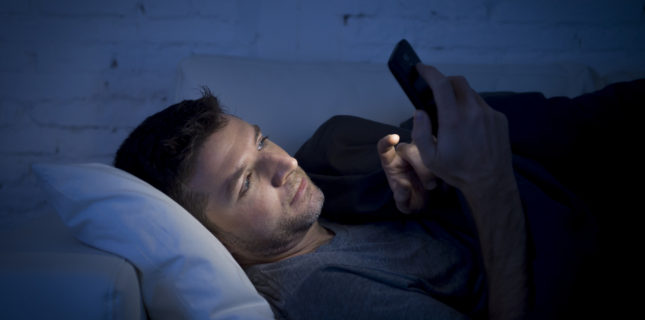
Blue Light Basics
You know that blue light emanates from both the sun outdoors and digital devices indoors. The problem, however, is that most patients still don’t understand the dangers of too much exposure. Here are 10 facts you can share with patients on this all-important subject.
Tip: “Patients need protection from blue light indoors and out, so you need to both educate them and prescribe the best solutions.”
- SPECTRUM. The human eye is sensitive to only one part of the electromagnetic spectrum—visible light.
- VISIBLE LIGHT. This is the part of the spectrum that is perceived as colors—blue, violet, yellow, green, orange, and red.
- WAVELENGTH. Because the blue end of the light spectrum (also known as high energy visible light) has a shorter wavelength, it produces more energy than other colors, resulting in potential long-term damage to the eyes.
- FLICKER. Blue light wavelengths aren’t just short. They’re also high energy. The result is that HEV wavelengths flicker more than other wavelengths. That means increased glare and, therefore, potential reduction in visual contrast and clarity.
- GLARE. Patients won’t perceive their problem as glare, but, when prompted, may admit to eyestrain, fatigue, and headaches.
- BENEFITS. On the plus side, blue light regulates circadium rhythm, meaning the human body uses blue light from sun to regulate sleep and wake cycles. It also elevates alertness, mood, and cognitive capabilities.
- USAGE. Here are some stats to share with patients.
- LEISURE. 60% of consumers spend more than six hours a day on a digital device. And, just two back-to-back hours on a device can cause fatigue or eyestrain.
- WORK. More than four out of ten adults have jobs that require prolonged periods at a computer or tablet. Little wonder that 7 out of 10 of them experience eyestrain, though most take no steps to remedy it.
* TEENS. Nearly two out of ten teenagers watch at least four hours of TV a day. Close to 15% of them spend four+ hours a day at their computers…and that doesn’t even include smartphones.
- KIDS. The Kaiser Family Foundation reports that children spend more than seven hours a day in front of digital media/devices.
- YOUNGER EYES. The impact of all this exposure is particularly critical for young children because the crystalline lens and cornea are still forming.
- OLDER EYES. According to the American Macular Degeneration Foundation, “Blue rays…seem to accelerate age-related macular degeneration more than other rays in the spectrum.” That’s partly because as people age, they lose melanin, the body’s “sunscreen.” In fact, more than half of the body’s melanin is gone by age 65, leaving the body increasingly susceptible to eye diseases like AMD.
- BOTTOM LINE. Patients need protection from blue light indoors and out, so you need to both educate them and prescribe the best solutions. Sun lenses, while helpful outside during the day, address only part of the situation. Your patients also need protection indoors, at work and school, and for leisure activities as well.
Have you discussed Blue Light Basics with your patients? Tell us how by joining the conversation here on our Facebook page.
Comments are closed.







